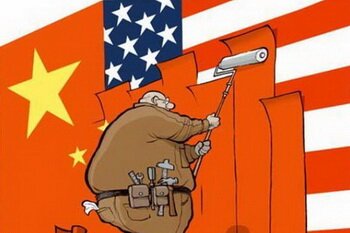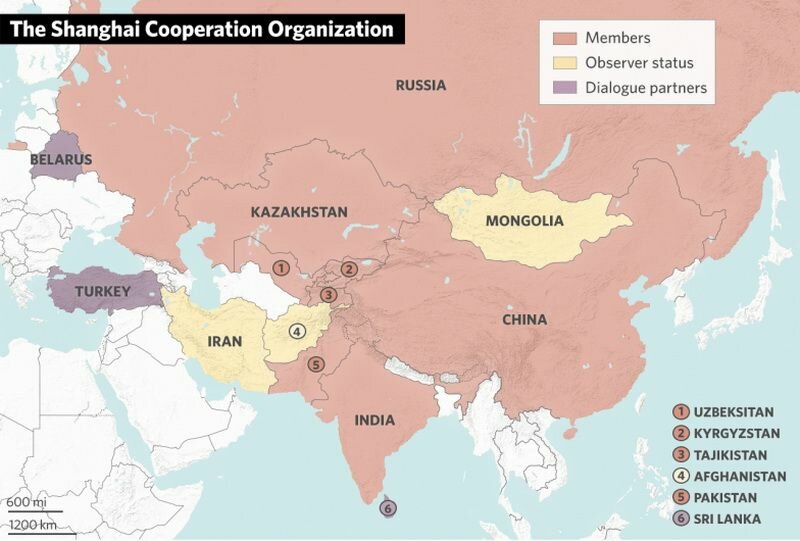
Consequences for Ukraine
In August 2018, a counter-terrorist exercise of the Shanghai Cooperation Organization (SCO) “Peace Mission-2018” is to take place on the territory of Russia. For the first time military units from India and Pakistan will participate in the exercise. At the same time, it will become the first event in the history of the participation of the above-mentioned countries in joint military exercises, which will be indicative in the context of significant problems in the Indo-Pakistani relations. Since the Indo-Pakistani wars over the disputed Kashmir state in 1947–1949 and in 1965, India and Pakistan have been in a state of permanent armed conflict that is periodically exacerbated. At this, both countries have nuclear weapons and demonstrate readiness to use it.
|
|
Under these circumstances, the agreement of India and Pakistan to participate in joint military exercise is a manifestation of the geopolitical changes in the world that are taking place in the process of forming a new bipolar model of a world system led by the United States and China. Proceeding from today's realities, within the framework of building spheres of their geopolitical influence, the main struggle between the parties is precisely for the countries of the so-called “Third World” with emerging economies. First of all, this concerns the countries of the Asia-Pacific and South-East Asia, which are becoming increasingly important as powerful centers of global economic activity.
In the context of these processes, China takes on the most active position as a new, dynamic superpower of world level, pursuing a coherent and targeted policy to achieve its foreign policy goals. The implementation of such a policy is carried out by Beijing in a wide range of spheres, paying special attention to the work in international structures created by the PRC or suiting China's interests. Among them, the strategic Chinese initiative “The Belt and Road” and the Shanghai Cooperation Organization occupy a special place.

|

|
| The “Belt and Road” is used by China to include partners in its economic system, and the SCO — in its controlled political-security space |
|
In this regard, the “Belt and Road” is predominantly used by China to include its partners in its economic system, and the SCO — in its controlled political-security space. In fact, it is through the SCO that the PRC is creating a counterweight to the military-political influence of the United States in the world. Despite the joint establishment of the SCO by China, Russia, Kazakhstan, Uzbekistan, Kyrgyzstan and Tajikistan in 2001, the advantage of China's potential in all spheres quickly allowed Beijing to take a dominant position in the Organization. So, at the present time, China is making the largest contribution to financing the SCO activities, which gives it the opportunity to determine their direction.
At the same time, China's high international prestige and its military and financial and economic opportunities make the SCO more attractive to other countries as well. In particular, in 2017, India and Pakistan joined the SCO. Besides, Afghanistan, Belarus, Iran and Mongolia are observer countries, while Azerbaijan, Armenia, Cambodia, Nepal, Turkey and Sri Lanka are its dialogue partners.

|
| In August 2018, for the first time military units from India and Pakistan will participate in the SCO exercise “Peace Mission-2018” |
After joining the SCO, India and Pakistan also joined all internal treaties, agreements and plans of the Organization, including the Programme of Cooperation among SCO Member States on Counter-Terrorist, Counter-Separatist and Counter-Extremist Measures for 2019–2021, and the SCO Defence Ministries' Cooperation Plan for 2018–2019, which envisages strengthening the confidence of the parties, a common response to new challenges and threats, and ensuring peace and stability in the region. According to this plan, “Peace Mission-2018” exercise will be conducted.
Against this background, the recent deterioration of relations between the United States and Pakistan has been taking place. For example, at the beginning of this year, US President D. Trump accused the Pakistani leadership of conniving indifference to terrorist organizations on its territory, as well as violations of freedom of religion. On the basis of such statements, on January 4, the US Department of State announced “freezing” of financial assistance to Pakistan worth about 900 million US dollars from the “Coalition Support Fund”, which is allocated to Islamabad to fight terrorism. In this way, an additional impetus was made to Pakistan's rapprochement with China and the SCO.
In general, these developments and trends allow us to draw some geopolitical conclusions regarding the development of the processes of division of the world between China and the United States, namely:
- The use of the SCO mechanisms allows China to confidently extend its influence to neighboring countries and regions, first of all the APR, South-East Asia and Central Asia;
- The entry of the countries of the above-mentioned regions into the sphere of influence of the PRC makes them subordinate their policies to China's interests, including making adjustments to it in terms of reducing the level of confrontation with its rivals. In turn, it appears to be a very effective factor in improving regional stability and security;
- The PRC's successful efforts to deepen cooperation with India, Pakistan and other “Third World” countries (including joint military exercises and other activities within the framework of the SCO) cause the weakening of the international influence of the United States and undermine its positions in the region, which directly contradicts the USA's interests.
|
|
The consequence of this objectively appears to be increased competition between the United States and China in the Asia-Pacific and South-East Asia, which may turn into regional confrontation between the parties. At this, both the USA and the PRC will increase military activity in the region, as well as take measures for mutual deterrence and pressure in different spheres.
In such a situation, Russia will be siding with China, as the former traditionally tries to use the intensification of US-China disagreements in its interests — to disperse the efforts of the USA and to divert its attention from Ukraine. Given the vital importance of these issues for the Putin regime, it can also resort to consciously provoking tension in the Asia-Pacific and South-East Asia, including providing assistance to terrorist organizations and urging the leadership of the DPRK to restore its missile and nuclear program.
Based on the political and economic interests of US President D. Trump, who attaches particular importance to defending US interests from the PRC and in the Asia-Pacific region, growing US-Chinese disagreements over these issues may indeed reduce Washington's attention to developments around Ukraine. Moreover, we should not rule out D. Trump's attempts to strengthen the US position in the rivalry with the PRC by reaching certain compromises with Russia, including on the Ukrainian issue. At present, the possibility of such actions by the President of the United States is restrained by the US Congress, which demonstrates a tight attitude to the regime of Putin. However, in case of a US-PRC moving to an open confrontation, the position of the US Congress may change in a negative way for Ukraine.

